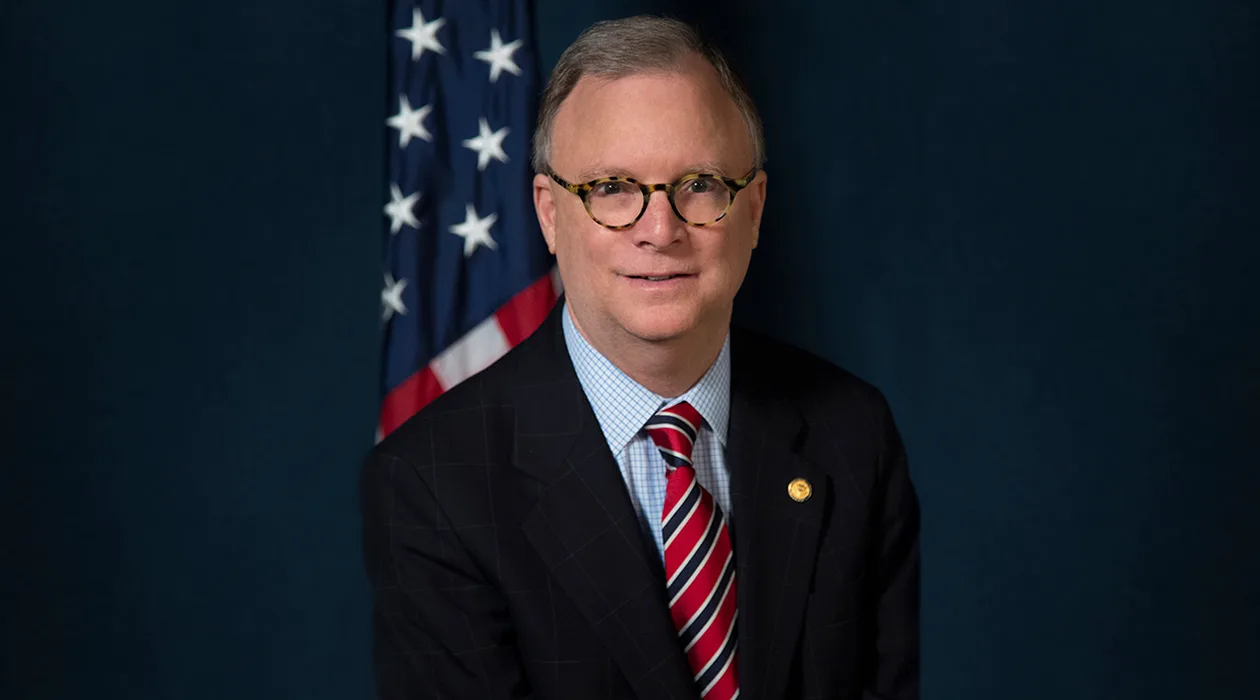Aurora Voices with NTSB Chairman Robert Sumwalt
Meet our team | June 17, 2021 | 3 min. read

Meet Robert Sumwalt, the Chairman of the National Transportation Safety Board (NTSB)
At the heart of Aurora’s technology and mission are the individuals behind it. In our series, Aurora Voices, we share the unique voices and stories of the people of Aurora, celebrating our backgrounds as well as personal and professional experiences. Today’s we’re expanding our series to feature a conversation with NTSB Chairman Robert Sumwalt, who recently came to speak at Aurora for National Safety Month.
Chairman Sumwalt, who served as the head of the NTSB since 2017, is a fierce advocate for improving safety no matter the mode of transportation. Here’s a recap of our conversation, which touched on what we can learn from the airline industry, why safety is a team sport, and how following his dreams led him to his role at NTSB.
Tell us a bit about your background. How does someone become the chairman of the NTSB? And what is the NTSB’s role in making transportation safe?
The NTSB is part of the U.S. government and we investigate accidents – in aviation, highway, marine, rail and pipeline – and then make recommendations to improve transportation safety for everyone. Our purpose is to learn from tragic events so that they can be prevented in the future.
As for me, I was a pilot for 32 years and accumulated over 14,000 flight hours. But even back in college, I was interested in accident investigation. I would read NTSB accident reports, hoping that one day I might be a part of the board. I eventually shared my dream with a friend who came back one day and said, “There's an opening, you've got to go for it." And with that, I put my name in the hat and after a year of vetting and Senate confirmation hearings, it worked. So I guess my takeaway is: follow your dreams.
Self-driving is a new industry with new technology, so we can’t just pick up standards from other industries and apply them directly. Still, there’s a lot to learn from other sectors. What can we learn from aviation?
From a safety perspective, airlines are outstanding. We had a pretty large, fatal airline accident in February of 2009. The next passenger fatality on board was in 2018. Bottom line is, we went nine years without an airline death with six billion passengers flying safely on US airlines.
The airlines have set a high standard with the implementation of Safety Management Systems (SMS) and with that, they are able to truly anticipate their risks and manage them. If the level of risk is not satisfactory, they’ll put mitigation measures in place to drive that risk down to an acceptable level.
One of the four key pillars of an SMS is risk management. How do you think about managing risk?
It sounds complicated, but it’s not rocket science. It's a matter of how we manage risk whenever we modify the way that we do something to increase the chances of success or decrease the chances of injury, failure, or loss. Hopefully we practice this in life every day. If I want to climb on a ladder to change a light bulb, I am going to do it when my wife is home in case I fall off. I'm modifying the way that I do something with safety in mind.
Do you think self-driving vehicles will be able to really improve safety on our roads?
AVs have the potential to change the world, literally. We have so many fatalities on our nation's roadways that if we can get rid of some of that human error, it's going to drive fatalities down significantly. But development and deployment has to be done right.
We talk a lot about having a strong safety culture at Aurora. It feels like an amorphous concept, but actually has some really tangible aspects. What makes a healthy safety culture?
A definition that resonates with me comes from the U.S. Nuclear Regulatory Commission, which says that safety culture is the core values and behaviors resulting from a collective commitment by leaders and individuals to emphasize safety over competing goals to ensure the protection of the people in the environment.
So it’s not about the CEO or the VP of Safety. Safety culture is truly a collective commitment by everybody in the organization – from the top to the bottom and from the bottom to the top – to prioritize safety over competing goals. Of course, businesses need to make money but safety always needs a seat at the table.
The NTSB recently closed out its recommendation to Uber ATG, which is now owned by Aurora, in regards to a March 2018 crash. You issued an “Exceeds Recommended Action” safety recommendation, which is quite rare. What led to the designation?
It is definitely rare; since 2010, there have been only five other highway safety recommendations with this classification. While the crash was tragic, ATG worked proactively and collaboratively with regulators to learn from its mistakes and raise the safety bar, not only for the company but for the entire industry. A big part of this work was standing up an SMS and promoting the importance of an SMS within the industry.
Okay, final question. What advice do you have to share?
Even when you're moving fast, ask yourself: what could possibly go wrong? Always think about the unthinkable.
— We’re always looking for people who want to advance our mission to deliver the benefits of self-driving technology safely, quickly, and broadly. Learn more about open roles on our Safety team and beyond: aurora.tech/careers
Delivering the benefits of self-driving technology safely, quickly, and broadly.